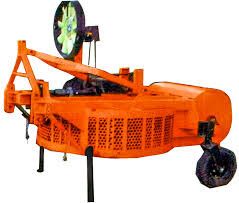
sugarcane trash shredder machine
2,000,000 Per Piece
1 Piece (MOQ)
Shredding plays a significant role in the disposal and management of sugarcane trash, which includes the leaves, tops, and other residual plant materials left after the harvesting of sugarcane. Efficient management of this biomass is crucial for maintaining agricultural productivity and minimizing environmental impact.Key Roles of Shredding in Sugarcane Trash Disposal: Volume Reduction: Shredding sugarcane trash significantly reduces its volume, making it easier to handle, transport, and store. This is particularly important in large-scale sugarcane farming, where the amount of trash generated can be substantial. Facilitation of Mulching: Shredded sugarcane trash can be used as mulch in the fields. The shredded material spreads easily over the soil, helping to retain moisture, suppress weed growth, and improve soil health. Mulching with sugarcane trash can also reduce soil erosion and enhance crop yields. Improvement of Composting: Shredding sugarcane trash accelerates the composting process by increasing the surface area of the material. This allows for quicker microbial breakdown, resulting in nutrient-rich compost that can be applied back to the fields to enhance soil fertility. Support for Biomass Energy Production: Shredded sugarcane trash can be utilized as a feedstock for biomass energy production. The uniformity and increased surface area of shredded trash make it more efficient to burn in biomass boilers, leading to better energy recovery and contributing to renewable energy generation. Reduction of Air Pollution: In many sugarcane-growing regions, trash burning is a common but environmentally harmful practice. Shredding offers an alternative by providing a way to repurpose the trash instead of burning it, which reduces air pollution and greenhouse gas emissions. Enhancement of Soil Quality: When shredded sugarcane trash is incorporated into the soil, it decomposes more quickly and evenly, adding organic matter that improves soil structure, increases water retention, and enhances nutrient availability for subsequent crops. Pest and Disease Management: Shredding sugarcane trash can help in reducing the incidence of pests and diseases that might thrive in unprocessed trash. By breaking down the trash, shredding disrupts the habitat of pests and accelerates the decomposition of disease-carrying plant material. Cost-Effective Waste Management: Shredding is a cost-effective way to manage sugarcane trash, turning what is often seen as waste into a valuable resource. This not only reduces disposal costs but also provides additional benefits to farmers through the production of mulch, compost, or energy. In summary, shredding is an essential process in the disposal and management of sugarcane trash. It enables the efficient reduction of waste volume, facilitates recycling and energy production, and supports sustainable agricultural practices. By repurposing sugarcane trash through shredding, farmers can enhance soil health, reduce environmental impact, and improve overall farm productivity.